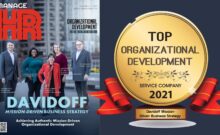On January 3, 2019, the world said goodbye to iconic corporate leader Herb Kelleher, co-founder and CEO of Southwest Airlines.
Like many, we admired Kelleher for his outstanding, people-focused leadership. In our case, that admiration was also grounded in how well Kelleher exemplified the traits of Mission Drivers, those who have an impeccable, dynamic vision for the impact of their organization’s work and lead others to accomplish the day-to-day mission with excellence, accountability, and a deep sense of fulfillment.
Here are several of the specific Mission Drivercharacteristics we have admired in Kelleher:
- Pursues a mission founded on an inspiring vision:Kelleher envisioned a very different airline, one that would enable everyone to enjoy flight, not just the privileged. Famous for democratizing air travel, he worked hard to make that a reality, not only improving access to air flight but creating tens of thousands of jobs across national and global markets and promoting a fun, people-focused culture that companies across industries have sought to emulate.
- Challenges the status quo: To bring his vision to life, Kelleher had to challenge long-established, rigid assumptions and industry standards. Among these were the idea that large markets were most important (Southwest used secondary airfields like Chicago Midway and Dallas Love Field as hubs), that airline culture should be formal and “by the book” (Southwest is famous for embracing a fun but still high-performance culture), and that paying people well may cut too much into the margin (Southwest paid team members above industry rates, shared a large portion of profits, and yet generated more consistent profits than its competitors).
- Uses critical thinking: Kelleher’s bold vision and commitment to moving from vision to reality wouldn’t have been enough by themselves. He backed these up with strategy based on smart practical thinking, always questioning assumptions, never being satisfied with the status quo. In Southwest’s case, that meant using more fuel-efficient, lower-cost planes and what became a famous no-frills (no seat assignments, drinks only) approach to drive the lower costs and more affordable fares critical to the vision. That thoughtful, strategic approach ultimately reshaped the industry.
- Acts based on clear values: Kelleher made his values clear and consistent among his teams and throughout the company, touching every aspect of the business. These included efficiency over frills, never sacrificing values for profits, and fulfilling a large social mission. Perhaps the clearest value he established was a strong customer focus, again a Mission-Driver staple. For example, Kelleher himself took many Southwest flights just to get input directly from his customers: the passengers. “If you’re wrong,” he said, “customers will let you know–with a vengeance.” As frequent Southwest passengers ourselves, we saw the airline’s customer–and employee–focus firsthand. Flight attendants, for example, said the company “walked the talk” (another characteristic of Mission-Drivers) of making people feel valued. “You have to treat your employees like customers,” Kelleher said. The CEO, who never took a pay raise or bonus himself, served as a positive role model, encouraging employees implicitly to “be like the boss.”
All of these characteristics translated into a high-performing business on every measure. Southwest was profitable from its third year, and under Kelleher the company never had a layoff or pay cut. Southwest routinely showed up on Fortune’s and other publication’s “Most Admired Companies” lists.
It all reflects the work of a true Mission-Driver: a leader who creates an inspiring, bold vision, then makes it their mission to bring it to life through a practical, strategic values-driven approach emphasizing people. That’s what Herb Kelleher did in his decades piloting Southwest Airlines. That’s why he belongs in our Mission Driver Hall of Fame.




